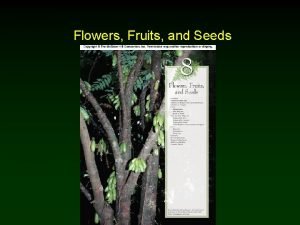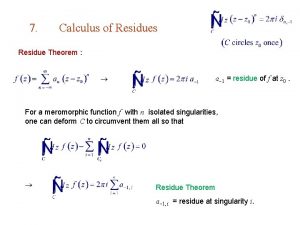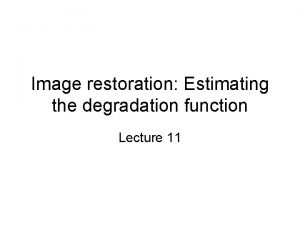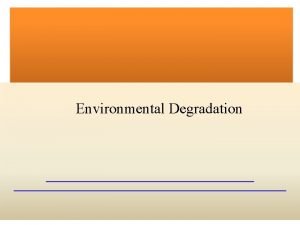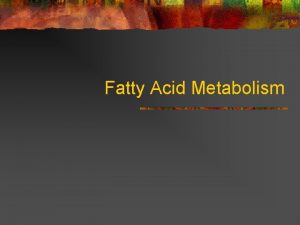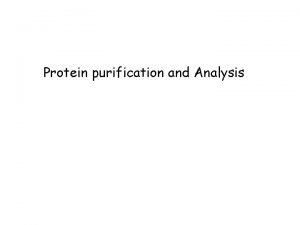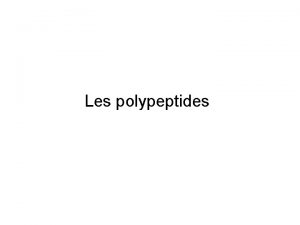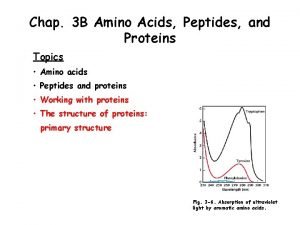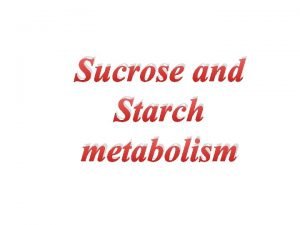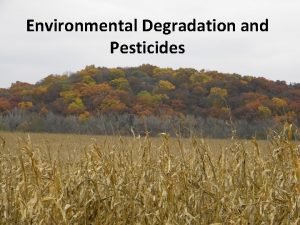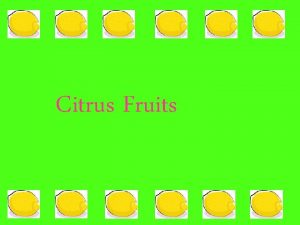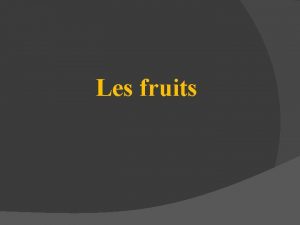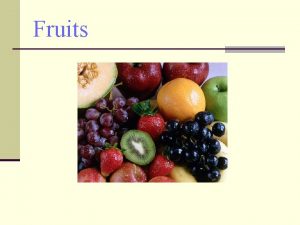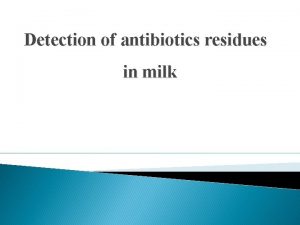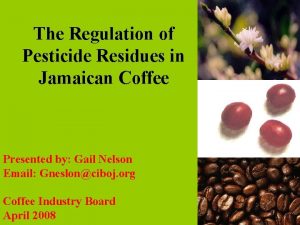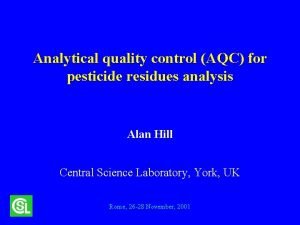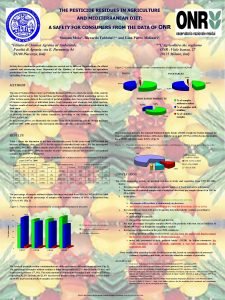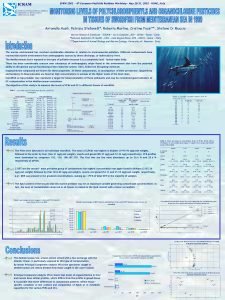DEGRADATION PERSISTENCE OF PESTICIDE RESIDUES IN PLANT FRUITS











- Slides: 11

DEGRADATION & PERSISTENCE OF PESTICIDE RESIDUES IN PLANT FRUITS. CRITICAL & HALF-LIFE TIMES FOR THE ASSESSMENT OF RESIDUES Dr Stella Canna -Michaelidou State General Laboratory, CYPRUS Email stellacm@spidernet. com. cy

Introduction Pesticides Degradation and Persistence are two interacted processes which determine the “disappearance behavior”. This behavior is mainly dependent on physicochemical relationship between applied preparation and host plant. In a plot of the ln of the pesticide concentration (ln. Ct) Vs the elapsed time [ln. Ct=f(t)], the behavior of both types is graphically presented by two straight intercepted lines representing two 1 storder reactions. The time corresponding to the point of the interception is designated as “critical” time, indicating the time of major behavior changes

Introduction Major causes Degradation n mechanical losses n volatilization n translocation n photo-/chemical- biodecomposition processes inner Outer parts Persistence m enzymatic reactions m translocation m binding with macromolecules m bio- & chemical decomposition processes outer Inner parts

Aims of the Research To investigate b. How degradation and persistence is differentiated between different host plants, If this differentiation can be assessed from both the “critical” and half-life time, and Whether the estimation of half-life time and critical time can provide information about the duration of the phytosanitary protection and the levels of remaining residues.

Experimental A rapidly metabolized organophosphorous ester the “diethylphosphoric ester of dicyclopropyloketoxime”(“dicy”) was used with t 1/2=2. 0 -2. 5 hours, host plants: tomatoes and cucumbers The disappearance behavior was investigated in fruit homogenate (“in vitro”) and in the field (in vivo studies)

Morphology & physicochemical characteristics of the fruit cuticle Tomatoes Cucumbers n rough n smooth n stomatophorous n highly lipophilic n astomatous Faster adsorption, penetration & less mechanical losses

Results evaluation and discussion n The t 1/2 values of the “in vitro” and “in vivo” degradation were converted at a common temperature, i. e. T 2 = 292° K. n The t 1/2 of the 4 studies were compared and statistically evaluated with the t-test, as follows n n In “vitro” studies: cucumbers Vs tomatoes In vivo studies: cucumbers Vs tomatoes In “vitro” cucumber Vs in vivo cucumbers In “vitro” tomatoes Vs in vivo tomatoes n The overall degradation and persistence behavior, was evaluated based on the statistical results and conclusions, n the disappearance curves and the critical time n

Results evaluation and discussion n A) “In vitro” studies: tomatoes Vs cucumbers n No significant difference in the t 1/2 values, n Disappearance curves were similar n Similar Degradation , BUT n Significant difference in critical time 8. 8 hours for cucumbers and 3. 5 hours for tomatoes implying different persistence behavior n B) “In vivo” studies: in cucumbers Vs tomatoes n Significant difference in the t 1/2 representing different degradation n Different disappearance curves. Degradation in tomatoes is presented by a bilinear curve n Significant difference in critical time 8. 8 hours for cucumbers and 3. 5 hours for tomatoes

Results evaluation and discussion C) “in vitro” and “in vivo” in cucumbers n There is a marginal statistical difference in the t 1/2 values. n The disappearance curves are similar, n Minor variation in the critical time (8. 3 -8. 8). This indicates strongly that the critical time is independent of the morphological plant characteristics. Obviously, it is also independent of the initial pesticide concentration. D) “In vitro” and “in vivo” in tomatoes n Significant difference in the t 1/2 n Different disappearance curves n Minor variation in the critical time (3. 5 -3. 7 h).

CONCLUSIONS The “critical” time is basically a function of persistence and can be used to assess it, The “critical” time is independent of the morphology and the cuticle composition of the plant but still dependent on its biochemical characteristics, The t 1/2 is a function of degradation, strongly dependent on cuticle characteristics. Both critical time and t 1/2 are independent of the initial pesticide concentration,

CONCLUSIONS n Persistence is becoming the predominant process faster when “critical” time is reduced. This can lead to higher residue levels, The critical time of the “dicy” applied on tomatoes varies from 3. 5 to 3. 7 hours, and on cucumbers, from 8. 3 to 8. 8 hours. As a result, higher residue levels were found in tomatoes than in cucumbers. Estimation of both half-life and critical time (on a given plant) can provide essential information about the duration of the phytosanitary protection and the levels of remaining residues
 Monocot fruits vs. dicot fruits
Monocot fruits vs. dicot fruits Residue theorem
Residue theorem Estimating the degradation function
Estimating the degradation function Linear position invariant degradation
Linear position invariant degradation How environmental degradation occurs
How environmental degradation occurs Metabolismn
Metabolismn Edman degradation
Edman degradation Edman degradation
Edman degradation Edman degradation steps
Edman degradation steps Fructose 1 6 bisphosphatase
Fructose 1 6 bisphosphatase Land degradation definition
Land degradation definition Importance of environmental degradation
Importance of environmental degradation
